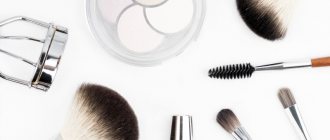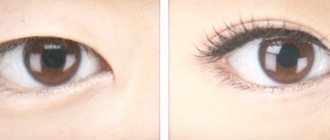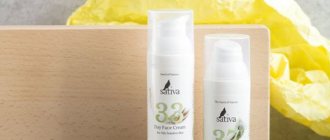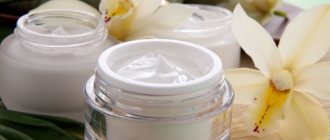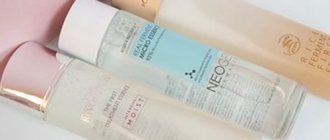Have you ever wondered how and where it is better to store face creams at home? The conditions in which you keep the jars and bottles determine how long you can use their contents. The effectiveness of the formulations is also related to this factor. How to prevent fresh cosmetics from going to waste?
The first thing to do is read the label. Usually, in addition to the components, it indicates the optimal storage methods and expiration date. Follow these guidelines. But if they are not completely given or have been erased, and you want to find out whether you can continue to use the product, be guided by the following rules.
- Suitable temperature is from 15 to 25 degrees.
- The best purchase option is small quantities. Most often, the product remains suitable for no longer than 12 months after opening.
- Place a sticker on the jar with the opening date.
- Use a special spatula or spatula.
- Always wash your hands thoroughly before performing skincare procedures.
- Regularly clean makeup tools that come into contact with mixtures and the neck of the tube.
- Do not carry jars in your purse, especially in hot or cold weather.
- Close the packaging well to prevent dust, excess moisture and air from getting into it.
- Do not replace the factory packaging with your own.
- Do not throw away the extra plastic lid; it serves to protect the contents of the container.
- Give preference to samples with a dispenser. They retain their properties longer and dirt does not get into them.
Features of storing products with different compositions
Depending on the substances contained in the product, the place and time of their storage is determined. You definitely need to pay attention to this, since organic, conventional and natural cosmetics, under equal conditions, will behave differently.
Moisturizing compositions, due to the presence of glycerin, lipids and amino acids in them, are less demanding than other products. The listed components do not deteriorate when exposed to air. But the rules of hygiene - do not take the mixture with your hands - still need to be observed.
Products with tea tree essential oil, zinc, and fruit acids are intended for problem skin and should be kept in a dark, cool place. Be sure to screw the lid on tightly as the ingredients oxidize when exposed to oxygen. The same goes for matte foundations.
Expiration date of face cream
First of all, always pay attention to the packaging. Usually the number of years during which its contents retain their properties is indicated on the bottom of the jar. This data applies to unopened containers. Once you open it, the life of the mixture is shortened. Experts advise using it no longer than a year. All this is true when we talk about formulations with preservatives. If natural ingredients occupy the majority of them, the time for use becomes even shorter, up to 2-3 months if we are talking about ampoule cosmetics or those enriched with vitamin A, C.
Remember that expired cream is not a harmless thing. Expiration dates for products are given for a reason! The easiest thing that can happen is pimples and rashes on the face or loss of function. For example, sunscreen sprays become almost useless by the next summer season. Other consequences include allergies, eczema, dermatitis, conjunctivitis, painful irritation and even intoxication. Of course, the last option is unlikely, but you shouldn’t risk the beauty and health of your skin. As soon as you notice the slightest change in color, smell, or consistency, get rid of the product.
At what temperature should different creams be stored and depending on the time of year?
The main recommendation is not to leave purchases in a room with temperature changes, excessive humidity and bright light. It is better to choose a chest of drawers, the bottom shelf in the closet, or a special container with compartments. For the hot season, there are beauty refrigerators that you can even take with you on the road. There are convenient compartments inside this case. Outside there is a screen on which you can set the appropriate mode.
As for seasonality, dermatologists give one piece of advice - buy as much as you can spend in the near future. This way you won’t have to save numerous tubes from the heat. But this is not always possible, so often girls still use the most accessible source of cold in the apartment.
Can face creams be stored in the refrigerator?
It is not recommended to keep regular skincare cosmetics at low temperatures, as it can be no less harmful to them than high temperatures. This especially applies to products that contain oils. It is better to leave it in the room, in a cool, dark place.
The exception is a product prepared independently. If you made a facial product from natural ingredients, its shelf life is no more than a week if stored in a cool place. Organic mixtures purchased in the store contain up to 95% natural substances. Everything else is preservatives, so low temperatures are not necessary for them. Read the label carefully. Most products indicate what you can and cannot do with them.
Makeup artists advise putting serums for the area around the eyes in the freezer. But this needs to be done a few minutes before application. This life hack helps get rid of puffy eyelids and reduce bags and dark circles.
Where else should you not store creams?
In fact, there are enough places in apartments where you shouldn’t keep cosmetics for your face and body. And the first of them is exactly the one in which girls like to leave numerous jars and bottles. This is the bathroom. In most cases, this is convenient, since some products must be applied to damp skin. But still, it would be better to bring them with you and then put them back. This is due to the high humidity in this room and stuffiness. Under such conditions, even products with preservatives will deteriorate faster than they could.
Next on the list of bad places for a makeup bag is the kitchen. It is also too warm, often light, and has inappropriate air during cooking. For obvious reasons, window sills, open shelves and cabinets next to radiators and windows are not suitable. Bedside tables are very convenient for keeping various emulsions on them, but this is not recommended. There, dust and light can get into the jar.
How to determine the expiration date of cosmetics and storage conditions
So, over time, the properties of a cosmetic product can change under the influence of microorganisms, oxidation, UV radiation, and chemical interactions between components. Creating a stable cosmetic product requires a comprehensive analysis and understanding of the information collected at the stage of formulation and research of the resulting composition. Assessing the behavior of a product over time is an important stage of development, long and costly, but necessary: after all, the manufacturer is obliged to determine the shelf life of the product and guarantee the stability and safety of its products throughout this period, as well as determine the conditions under which this can be guaranteed. If the recipe uses a long-established and studied base (the so-called “chassis”), the testing time can be somewhat reduced, but it cannot be completely abandoned: after all, even a long-familiar system can present surprises when changes are made to it.
Of course, the most reliable way to assess stability is to store samples for the entire shelf life (e.g., 30 months) under standard conditions, periodically checking product characteristics. Technically, this may be justified, but from a commercial point of view it is inappropriate, otherwise the product risks becoming obsolete by the time it is mass produced. Therefore, in reality, accelerated tests are carried out before a product is released into production, and real-time monitoring of the product's behavior continues throughout the time it is released. There are usually several such tests:
• accelerated aging test (storage of samples at elevated temperatures);
• temperature stress test (freezing/thawing or cooling/heating cycles);
• storage under standard conditions (20 or 25 °C) or at room temperature (checking the behavior of the product under real conditions);
• challenge test, which allows assessing the ability of the selected preservative system to protect the product from microbiological spoilage;
• checking photostability;
• checking compatibility with packaging.
The principle of accelerated aging for assessing product stability and shelf life is borrowed from the pharmaceutical industry. The testing methodology is based on storing samples at elevated temperatures: according to Van't Hoff's rule, the rate of first-order reactions increases 2-4 times with an increase in temperature by 10 °C, and microorganisms behave more actively with increasing temperature. This allows you to quickly identify problems that may arise when storing the product under normal conditions. In addition, the accelerated aging test is also used to predict shelf life. For example, it is believed that an emulsion stable at 40 °C for six months, or three months at 45 °C, can be stored for two years under standard conditions.
Accelerated aging is carried out at various temperatures - 37, 40 or 45 ° C, sometimes even higher. The exact temperatures and duration of the test vary depending on the purpose of the test and the stages of product development. For example, accelerated aging tests at 50°C should only be carried out if the product is intended for sale in a very hot climate: in any other case, at this temperature changes will occur in the product that would never occur in reality. The usual duration of the test is several months (from two to six). At certain intervals, samples are checked for certain indicators and compared with indicators at the beginning of the test and with data for samples from the control group. Samples from the control group are stored at 4 °C (plus or minus two degrees): at this temperature, physicochemical and microbiological processes, although they do not stop completely, proceed rather slowly. The duration of storage of control samples should coincide with the duration of storage of samples in the longest test; It is very important to maintain a stable storage temperature.
When testing for accelerated aging, you need to understand that the results cannot always be extrapolated with absolute certainty to the behavior of the product under normal conditions. For example, the stability of some ingredients, as mentioned above, decreases with increasing temperature. If the product contains carbohydrates, then at high temperatures you can expect caramelization or glycosylation reactions to occur, which will not happen under normal conditions. However, accelerated aging provides valuable data to help identify unacceptable storage conditions, as well as to screen out unfavorable formulations that exhibit instability. Thus, a product that is unstable at very high temperatures will not necessarily be unstable under actual conditions of use. But, on the other hand, if a product is stable in an accelerated aging test, it will be stable under normal conditions.
If you plan to supply products to different climate zones , it is useful to consider climate data for different geographic regions when planning tests. It is considered that tests should be carried out at the average maximum kinetic temperature and average maximum humidity. Humidity is simulated either by storing cosmetics in a climate chamber, which not every manufacturer can afford, or by storing them in a closed container, the atmosphere of which is in equilibrium with a saturated solution of a certain salt. For example, a saturated solution of potassium nitrate at 40 °C will provide a relative humidity in a closed container of 88%, sodium chloride - 75%, and magnesium chloride - only 32%.
The challenge test also serves as a valuable tool for predicting product shelf life. The essence of the test is that the test samples are infected with certain strains of microorganisms, and after certain periods of time (for example, after 6 hours, 24 hours, 7 days, 14 days, 21 days and 28 days), aliquots are taken, cultured and the resulting colonies are counted . The number of CFU/ml at a certain stage of the test indicates the ability of the preservative system to cope with contamination. This is usually expressed as a factor of ten reduction, D, the time required to reduce the population of test microorganisms by a factor of ten. For example, for non-adapted gram-negative bacteria, the D value should be about 30 hours. This means that if the preservative cannot cope with the introduced contamination in the first 30 hours, then the microorganisms in the product will continue to exist and multiply.
To assess the adequacy and suitability of a preservative system, challenge tests are carried out on both samples stored under normal conditions and samples from the accelerated aging group to indicate the extent to which the preservatives are able to protect the product during storage. However, when working with samples after accelerated aging, the thermal stability of the preservative must also be taken into account. For example, imidazolidinyl urea is sensitive to elevated temperatures, and such tests may lead to incorrect results. Another example of this kind is an alternative system for protecting cosmetics from microbial contamination based on the enzymes lactoperoxidase and glucose oxidase. As the temperature rises, the activity of enzymes may well decrease, and at a certain temperature they can be completely and irreversibly inactivated. The lactoperoxidase-glucose oxidase system remains active after storage at 35°C for 24 weeks, but activity is lost at higher temperatures. This means, firstly, that for cosmetics in which this system is used, the temperature of tests for accelerated aging and the storage temperature of samples during stress microbiological tests should not exceed 35 ° C, and storage conditions should take this nuance into account, and during testing Enzyme activity must be checked for stability.
It is also a useful practice to evaluate the microbial purity of previously used product samples (for example, after consumer testing) in comparison with unopened controls. If the total aerobic microbial count in a used sample is below 10 CFU/g and the preservative system is still effective, the formulation is considered protected under conditions of use. Such tests also provide valuable information for determining the shelf life of the product after opening.
It is also necessary to take into account the fact that preservatives can also be adsorbed on packaging surfaces in contact with the product. For example, it is known that parabens, benzoic, sorbic and salicylic acids are adsorbed by polyethylene. Therefore, it is very important to test the stability of cosmetics and the effectiveness of the preservative system in exactly the packaging in which the products are planned to be sold.
Temperature cycles provide important information about the stability of a formulation, but do not indicate anything about shelf life. Typically, five freeze/thaw cycles are performed (-10°C to room temperature over 24 or 48 hours). Sometimes samples are assessed for stability under positive temperature changes: for this they are placed in a special chamber in which the temperature changes from 4 to 45 °C every 48 hours for a month.
The assessment of product compatibility with packaging should ideally, of course, be carried out in the exact packaging in which it will be sold. However, if this is not possible, testing is carried out in a package as close as possible to the chosen one. Control samples for this test are kept in inert packaging (usually a sealed glass container) to ensure that changes, if any, are due to interaction between the product and the packaging and not inherent in the formulation itself.
Compatibility issues between product and packaging can lead to problems with transportation and storage. Poor barrier properties can lead to fragrance volatilization, fading, oxidation due to oxygen penetration, weight loss during storage, etc. Finally, incompatibility with packaging can lead to deformation, cracking, softening or swelling of the packaging, adsorption of ingredients on the internal surface (including preservatives), migration of dyes and other components of the packaging material into the product. This test is also useful in providing information for predicting shelf life.
photostability test can be carried out under real-life conditions (usually exposure to north-facing daylight for a month), but in this case the test cannot be standardized and the conditions cannot be reproducible. Therefore, for such tests, artificial lighting with a spectrum close to the spectrum of sunlight is often used. Typically, an arc lamp with carbon electrodes or a xenon arc lamp is used as a light source, and the latter is preferable in terms of spectral characteristics. The stability of the samples is assessed at specified intervals by the degree of color change, as well as odor, appearance and consistency, in comparison with a control sample stored in the dark. In addition, some manufacturers test the stability of products under artificial lighting, typical of sales floors.
A real-life story demonstrates the importance of comprehensive testing. The developer tested the facial cleansing cream for stability under accelerated aging conditions, photostability, colloidal stability, compatibility with the selected packaging, and the product was launched on the market. However, a few weeks after it went on sale, complaints began about oil separation, and the situation worsened every day. Was this a production problem? No. It just turned out that the deliveries took place in winter, the cream was exposed to low temperature and vibration (transportation by road), and the combination of these factors with a high content of the internal oil phase led to syneresis. The problem could have been anticipated if the product had been tested using a special device (laboratory shaker) under cold and high temperature conditions.
Next: Isn't it better to store cosmetics in the refrigerator?
Elena Krasney, chief technologist of SOJSC Perfume and Cosmetic Factory Modum-Our Cosmetics.
How to properly store anti-aging face cream
Anti-aging products usually contain the following unstable components:
- Vitamins A, C.
- Hyaluronic acid.
- Extracts from plants.
- Retinol.
All these substances can deteriorate when exposed to oxygen. To preserve cosmetics for a longer period, manufacturers place them in jars and bottles with walls made of thick glass or metal. Therefore, after each use, the container must be tightly closed. Like other compounds, they should not be left in direct sunlight, in a too cold or damp place. If stored incorrectly, you will not get any positive results from using such a cream. In some cases it can be harmful. For example, cause irritation or an allergic reaction.
Where should creams not be stored?
1. The bathroom is considered the worst place to place creams. You should not store cosmetics here. Due to humidity and temperature changes, the composition of the product begins to deteriorate, only if it is not a hair gel or shampoo. Since these products are used constantly, they do not have enough time to lose their beneficial properties. When the expiration date expires, there will be no harm from using it. After all, these products are used for washing; the skin does not absorb them. The shampoo can be easily washed off.
2. Cream used for acne should not be left with the lid open. This product contains fruit acids, zinc, and herbal extracts. When each of these components comes into contact with the external environment, they rapidly degrade. In this regard, creams are packaged in sealed metal tubes and bottles with dispensers.
3. The mattifying cream contains different types of talc. When exposed to air, it degrades, so before opening the tube, you need to find out how to store creams.
Where to keep other skincare products
Eye patches
These transparent gel-based plates are in demand today more than ever. They are a little sticky to the touch and have a lot of moisture in them. It is important to keep the box with them tightly closed so that the water does not evaporate. Micromasks are usually used for no longer than two months and are kept in the refrigerator.
Sunscreen sprays
The place where you leave the bottle should be dark and cool. On the beach it is better to put it in the shade. Validity period is maximum two years. Most often, after this time, the product simply ceases to perform its functions.
Masks, scrubs, peelings
For application, buy a special brush so as not to introduce excess moisture or germs into the mixture. After opening, cosmetics retain their properties for two to four months. Bathroom, kitchen, heating appliances, window sill are taboo for such products.
Serums, lotions, tonics, foams, emulsions
All of these beauty products are designed to cleanse, moisturize and nourish. The place for them is selected depending on the manufacturer’s instructions on the packaging or components. If there is alcohol, glycerin, amino acids, lipids, room temperature will do. The presence of antioxidants and phytoextracts in the composition suggests that the conditions should be cooler.
How to conveniently store cosmetics using walls.
When free horizontal space is really bad, we start using vertical planes to store cosmetics. With great convenience and I’m not afraid of this word - chic - everything can be put into pots: ceramic, plastic, metal - the choice is yours)
And as always, kitchen rails are ahead of the curve!
Classic wooden shelves are unbeatable!
Shelves that look like small pens for storing cosmetics - isn’t that cute?)
Fantasy shelves are the best aesthetic option for storing cosmetics)
Although..) Again, if you have a bit of ingenuity, here’s a hint for you. Take a large plastic pipe from the plumbing department, cut it into small sections, and voila! You have unusual homemade shelves for storing lipstick, mascara or lip gloss.
A very interesting and bright way to put everything in order) Literally))
And yet... we must not forget about every little thing, like endless eye shadows. You need to stick small magnets on everything, and paint any vertical surface with magnetic paint. Unstick - stick and forget clogged cosmetic bags)
Or just use a magnetic strip from the kitchen utensils department. Tweezers, scissors and tweezers belong there)
How to store foundation and other decorative products
The camouflage base also needs to be hidden from sunlight, heating devices, and cold. The expiration date of each product is indicated on the container and box. Usually it is no longer than two years. A dark, dry, closed shelf will do. If the apartment is hot - more than 30°C, you can put the tube in a thermal bag or refrigerator door (the temperature is the most acceptable there). Buy special glass rods, applicators or spatulas so as not to take the foundation out of the jar with your hands. This will preserve the quality and purity of the sample for a longer time.
Makeup products are often not considered dangerous even after their expiration date. But they, just like skincare products, can harm the skin. For example, expired mascara will not only look bad on your eyelashes, but can lead to severe allergic reactions. To prevent this from happening, do not use it for more than six months and periodically wash the brush with warm water and soap.
Lipsticks, like creams, do not like either heat or frost. Therefore, they cannot be put in the refrigerator for the summer, the consistency will deteriorate and you will not be able to apply makeup on your lips. The qualities last for a year, but it is better to keep it within six months. A changed smell is a reason to throw away the product. Keep all eyeliners, pencils, glosses closed. This refers to the cap in which such a product is sold.
It seems that dry powder is difficult to harm due to environmental conditions. But that's not true. Over time, bacteria and even microscopic mites also appear in it. The same problem can happen with crumbly shadows. For this reason, it is important to change them once a year and always screw or snap the lid tightly!
Special mention should be made of brushes and sponges. Almost no makeup can be done without them. And they are an ideal environment for the proliferation of microorganisms. This is especially true for makeup sponges. Each time after applying foundation, rinse them in warm water. Lather, squeeze gently and rinse. Repeat the procedure several times. Then gently wring out without twisting and leave to dry in a ventilated room. Do not leave it on the battery. Despite daily care, instruments must be changed every two to three months. Brushes last longer because they do not have a porous structure in which remnants of blush, base and dirt accumulate.
How to store different types of decorative cosmetics?
- Products with a dry texture - powder, blush, highlighter, eye shadow - are unpretentious and “live” the longest because, unlike creams and gels, they do not provide a favorable environment for the growth of bacteria. The main thing is to prevent them from being in an area of high humidity. Otherwise, they may separate, making application difficult. Other properties of these products may also be affected.
© site
- Cream products - primers, foundations, correctors, concealers and other cosmetics of this kind - are more sensitive to temperature changes and exposure to light. They definitely need to be provided with such a storage place that neither directed rays of light, nor moisture, nor hot air get there. Their effect will be more destructive than in the case of dry products - cream ones can deteriorate very quickly.
© site
- As for liquid products (for example, nail polishes), the same rules apply to them. True, if we talk about varnishes, then the handling of the bottle also plays a significant role. If you do not close the lid tightly and leave traces of varnish on the “neck” (it is better to wash them off with acetone after each use), there is a risk that the product will quickly thicken and become unusable.
© site
It is important not only to choose a place where to store cosmetics. You should also know something about its shelf life. The expiration date is often not equal to the permissible period of use of beauty products. To find out how long they can last after opening the package, look for an icon on the package with a picture of a jar with the lid open. The term is usually indicated on the jar - in the format 12M, 18M, and so on.
Customer reviews
Lovers of skincare and decorative cosmetics have different attitudes towards storing them. Some leave it in a desk drawer, others in a cooler place. But many agree that they remove seasonal products during downtime. For example, emulsions with unstable components are placed in the refrigerator door for the summer.
Now you know where and at what temperature to keep creams at home. Take care of your skin and use only good products with a suitable expiration date. Avoid making impulse purchases that you won't immediately open and use. Wash your hands thoroughly before applying makeup and remember to close caps and lids tightly.
If you find that your cosmetic bag is missing something, take a look at the First Moscow Customs Goods Store. On the website you can choose products for face and body care without leaving your home. The catalog features an impressive range of emulsions, serums, scrubs, peels, lotions and much more. All have affordable prices, quality certificates, and a convenient search system.
Conveniently place all available shower and personal care accessories.
Is this a familiar picture? I’m sure each of us has seen it at least once) Use ideas for storing bath items so that this doesn’t happen again.
If you have enough space, allocate a whole cabinet for storing shampoos and others like them.
It's a great idea to use a mesh (or any other) multi-tiered fruit basket as a keeper for your tubes, sponges and towels.
Only a genius could come up with such convenient storage hanging organizers for combs, sponges and other shower gels.
Regular office clips, towel hooks or curtain clips - you choose how to secure the tubes so that they are always at hand and do not take up space in a small bathroom.
Admit it honestly: you also bring mini soaps, gels, and shampoos with you from your travels? Now all that remains is to purchase these tall or pot-bellied glass jars with lids. Can you imagine how much coziness they will add to the interior of your bathroom?!
If this is a bottle holder - and it seems to me that it is - then we have already put towels in them... now it’s the turn of shampoos and hand creams)
If you have a man with hands and a little space next to the bathroom, why not make such an impromptu storage for your favorite bottles?
No one has canceled the traditional corner shelves for storing “washing equipment”. But let them at least be bright and cheerful.
I really like this option for getting rid of the clutter in the rows of bath cosmetics. For every taste and color and it doesn’t get in the way.
And finally, one more small picture. Maybe these are special shelves for shampoos, or maybe shelves for spices...Who knows?)
Shelf life after opening the jar or tube
Each cream has an individual composition, which directly affects the period of use after opening the container.
You cannot rely on the expiration date on the packaging. This date indicates the shelf life in an airtight, unopened tube or jar. Once opened, the period of use is reduced.
So, what is the correct way to store opened face cream? To determine the shelf life after opening, you need to pay attention to the designation on the tube. It is indicated by a conventional sign, for example, M6. This means that after opening you can use the cream for 6 months.
The composition and structure of the cream is influenced by the method of its use. Facial cosmetics from a jar require direct contact with your hands. Thus, microbes and harmful components, air, enter the texture.
This may shorten the life of the care product.
It is recommended to take a portion of the cream not with your fingers, but with a special cosmetic brush.
Creams retain their properties better in tubes . They have less contact with external components, oxygen does not enter the tube as actively.
Can I use the cream after the expiration date?
Most skin cosmetics are expensive, so it’s a pity to throw away an unfinished jar of a miracle product after the expiration date. But is it possible to use the cream after it has become unusable?
Cosmetologists note that expired cream is like yogurt after its expiration date. Eat it and toxic components will enter your body. If you apply a cosmetic product that is unusable, the effect will be the same. Only the poison enters the body not through the stomach, but through the skin .
It is important to pay attention to the expiration date, which is indicated on the seal or bottom surface of the jar. After this period, you cannot use the product!
After the expiration date, the texture, smell, and color of creams change . When applying such products, it is unlikely that there will be a beneficial effect on the skin.
Creams take care of the skin and can restore its youth, elasticity and healthy glow . But it is necessary to store them correctly and monitor expiration dates. Only in this case can you expect benefits and careful treatment of delicate women's skin.


